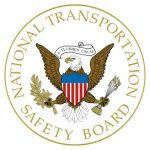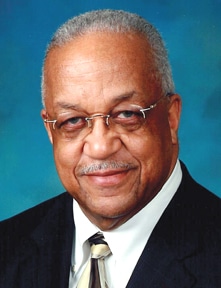
The Federal Railroad Administration (FRA) received one urgent safety recommendation based on NTSB findings in the agency’s investigation of the Feb. 4, 2018, collision of an Amtrak train and a CSX train near Cayce, S.C. The conductor and engineer of the Amtrak train died as a result of the collision. The NTSB issued two urgent safety recommendations to the Metropolitan Transportation Authority (MTA) based on findings from its investigation of the June 10, 2017, Long Island Rail Road (LIRR) accident in which a roadway worker died near Queens Village, N.Y.
In the investigation of the train collision in Cayce, South Carolina, investigators found that on the day before the accident, CSX personnel suspended the traffic control signal system to install updated traffic control system components for the implementation of positive train control (PTC). The lack of signals required dispatchers to use track warrants to move trains through the work territory.
In this accident, and in a similar March 14, 2016, accident in Granger, Wyo., safe movement of the trains, through the signal suspension, depended upon proper switch alignment. That switch alignment relied on error-free manual work, which was not safeguarded by either technology or supervision, creating a single point of failure.
The NTSB concludes additional measures are needed to ensure safe operations during signal suspension and so issued an urgent safety recommendation to the FRA seeking an emergency order directing restricted speed for trains or locomotives passing through signal suspensions when a switch has been reported relined for a main track.
“The installation of the life-saving positive train control technology on the CSX tracks is not the cause of the Cayce, S.C. train collision,” said NTSB Chairman Robert Sumwalt.
“While the collision remains under investigation, we know that signal suspensions are an unusual operating condition, used for signal maintenance, repair and installation, that have the potential to increase the risk of train collisions. That risk was not mitigated in the Cayce collision. Our recommendation, if implemented, works to mitigate that increased risk.” said Sumwalt.
During the investigation of the LIRR accident, the NTSB identified an improper practice by LIRR roadway workers who were working on or near the tracks. LIRR employees were using “train approach warning” as their method of on-track safety, but they did not clear the track, as required, when trains approached and their “predetermined place of safety” did not comply with LIRR rules and procedures.
The NTSB is concerned LIRR management is overlooking and therefore normalizing noncompliance with safety rules and regulations for proper clearing of tracks while using “train approach warning” for worker protection. The two urgent safety recommendations to the MTA call for MTA to audit LIRR’s use of “train approach warning” for worker protection, and, to implement corrective action for deficiencies found through the audit.
The full safety recommendation reports for these urgent safety recommendations are available online at https://goo.gl/z87Dpz and https://goo.gl/LVVef3.

![mta_long-island-railroad-logo[1]](https://www.smart-union.org/wp-content/uploads/2013/07/mta_long-island-railroad-logo1-150x150.jpg) Metropolitan Transportation Authority (MTA) officials Tuesday began the process of breaking through the floor of Grand Central Terminal in New York City, marking the start of construction on one of several access points that will connect the terminal to a new concourse for Long Island Rail Road (LIRR) passengers being built below.
Metropolitan Transportation Authority (MTA) officials Tuesday began the process of breaking through the floor of Grand Central Terminal in New York City, marking the start of construction on one of several access points that will connect the terminal to a new concourse for Long Island Rail Road (LIRR) passengers being built below. HARTFORD, Conn. – Federal transportation officials and the Metropolitan Transportation Agency have agreed on a nearly $1 billion federal loan to install technology that could slow trains when necessary on Metro-North Railroad and Long Island Railroad.
HARTFORD, Conn. – Federal transportation officials and the Metropolitan Transportation Agency have agreed on a nearly $1 billion federal loan to install technology that could slow trains when necessary on Metro-North Railroad and Long Island Railroad. The MTA is about to get a little more CSI.
The MTA is about to get a little more CSI. By James A. Williams
By James A. Williams